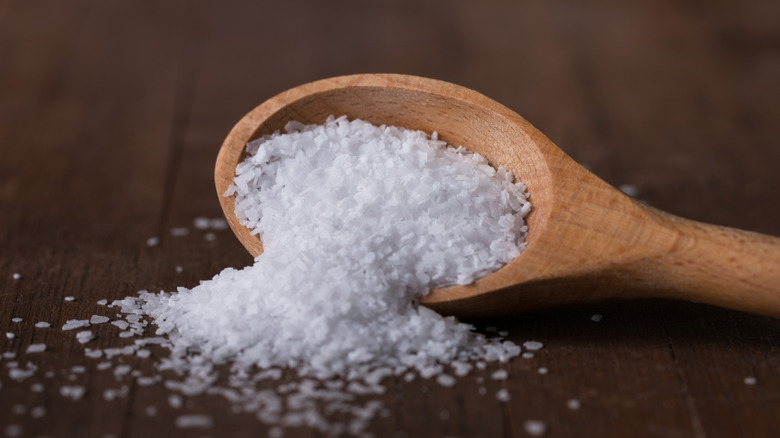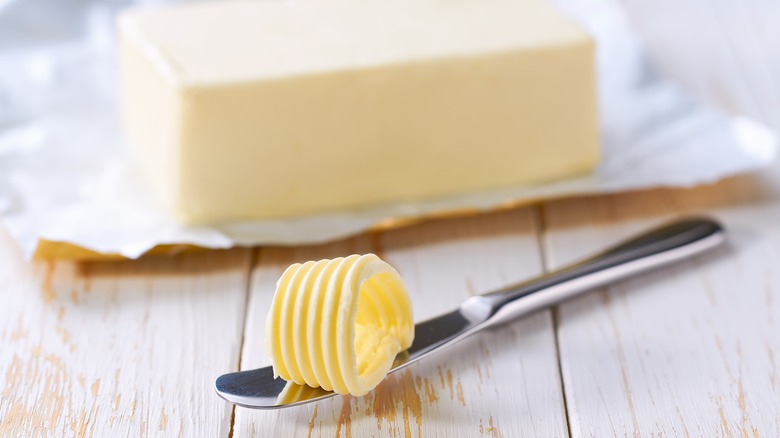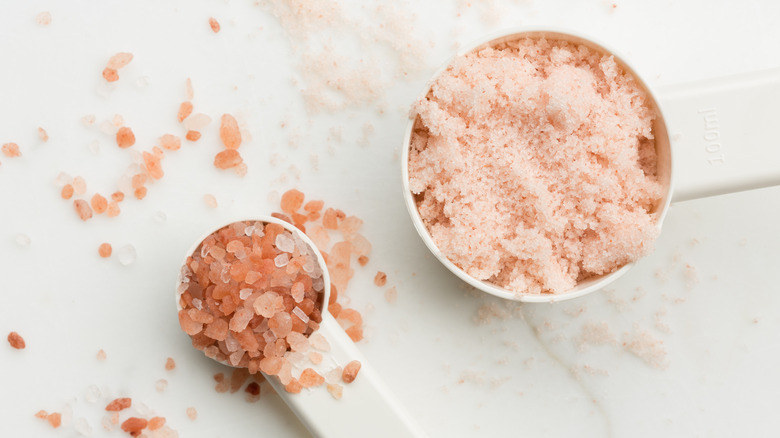What You Should Always Consider Before Adding Salt To A Recipe
There may not be a single cooking ingredient on the face of the planet more universal than salt. Very few foods can't be improved by the addition of at least a little bit of nature's greatest flavor enhancer, and it's the base component of nearly every good spice blend. A life without salt is a pretty bland one.
But there's an easy mistake to make when you're working from a recipe: adding too much salt without accounting for the dish's other existing ingredients. Salt is naturally present in many, many foods, and recipes are often balanced around this fact. Sometimes, when a recipe seems to call for less salt than you think you need, the end result is still going to be plenty salty because of what other ingredients are bringing to the table. In particular, look for things like olives, anchovies, parmesan, bacon, pickles, or even miso — all of them naturally add salt to a dish, so you have to be careful before piling additional salt on top of that.
Unsalted vs. salted butter illustrates the difference
Butter is another illustrative example here, as it comes in two common forms: salted and unsalted. When you're simply spreading butter on toast, salted butter is a godsend, delivering that rich, salty bite you want. But many professional cooks will use unsalted butter in pretty much any recipe, since it gives you greater control of the end product's salt content. This is particularly true in baking, where measurements need to be very precise.
If you add too much salt from failing to account for what's already present in the ingredients, you do have some options to fix the problem. Acids, sugar, potatoes, and fats like dairy are all great solutions for a too-salty dish — though clearly some are going to work better for certain dishes than others, and dousing an oversalted steak in milk may not be the best plan. If you're dealing with a liquid dish, you can also simply fix oversalted food by adding more water, although you may need to add a thickening agent to account for texture. It may seem counterintuitive to fix deviation from a recipe by deviating even further from that recipe, but sometimes, it's the only option you have.
There are other ways you might get your salt measurements wrong
There are plenty of other mistakes you might not even realize you're making with salt which can affect your dish's flavor, too. You should understand that different salts like table and sea salt have different purposes, and you shouldn't, for example, simply use table salt when the recipe calls for a thicker finishing salt. When substituting salt, meanwhile, you have to be careful about measurement conversions, as different-sized grains can lead to different weights despite similar volumes like one tablespoon. Most people also don't realize that while salt doesn't technically expire, it does lose potency after a few years. And of course, you should always taste as you go — a lesson which can help mitigate the issue of failing to account for natural salt in your ingredients.
Salt is one of the key flavors in many types of food, and you shouldn't forgo it simply because you're worried about making a dish too salty. But it's equally important to know how you're using it and to account for ingredient salt content and other potential pitfalls if you're going to be changing things up from an existing recipe.


